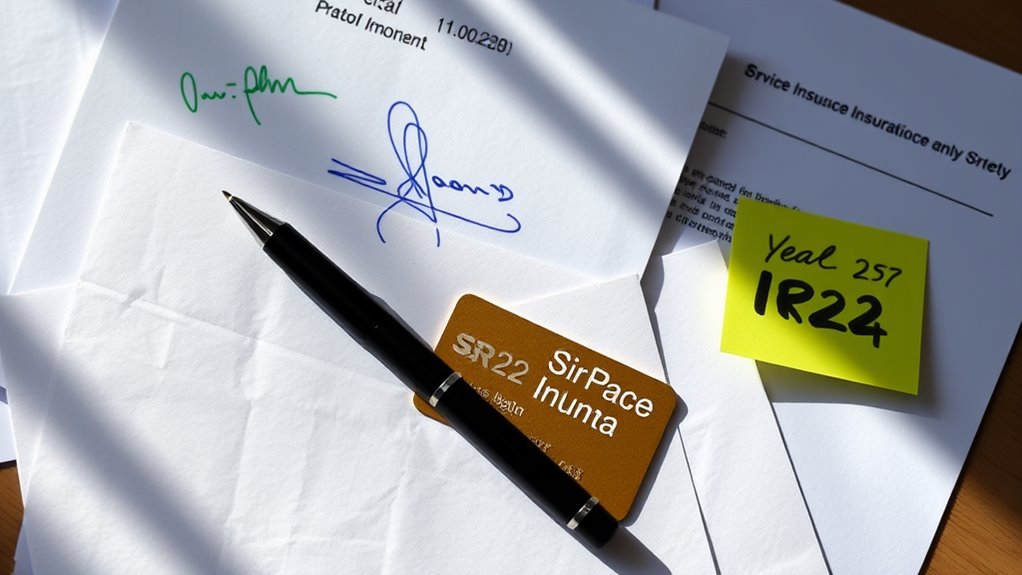Many people underestimate how various factors can greatly impact their SR22 renewal rates. Your driving history, for instance, plays an important role, as do your vehicle type and even where you live. Demographics such as age and gender can also sway costs. Understanding these elements is essential to anticipate your premiums. What you may not realize is how small adjustments in your coverage can further influence your rates.
When you're maneuvering the complexities of SR22 renewal rates, it's important to understand the various factors that can influence your insurance costs. One of the most significant elements is your driving record. If you've had prior offenses, especially serious infractions like DUIs, you can expect your renewal rates to increase substantially. Insurers view these types of violations as indicators of higher risk, which translates to higher premiums.
Similarly, accumulating multiple traffic tickets within a short timeframe can also drive your rates up, as it suggests a pattern of risky behavior.
The type of vehicle you drive plays a key role in determining your SR22 renewal costs. Generally, newer or more expensive vehicles lead to higher insurance rates. This is because the potential repair or replacement costs for these cars are greater, which makes insurers wary. If you're thinking about purchasing a vehicle, it's worth evaluating how its value might impact your SR22 rates.
Your location is another significant factor in this equation. Urban areas typically come with higher insurance premiums due to increased risk factors such as traffic congestion, higher accident rates, and theft. If you live in a rural area, you might find that your rates are comparatively lower. Take a moment to reflect on how your geographical situation affects your insurance costs, especially if you're contemplating a move.
Age and gender can also impact your SR22 renewal rates. Statistically, younger drivers and male drivers face higher premiums due to their perceived risk levels. Insurers often use demographic data to evaluate risk, so if you fall into these categories, expect to pay more.
The specifics of your coverage and deductibles are equally important. If you opt for higher coverage limits or lower deductibles, your SR22 insurance costs will rise. Conversely, adjusting these factors may help you achieve a more manageable rate. Additionally, it's crucial to remember that maintaining SR-22 requirements is essential to avoid penalties that could further affect your renewal rates.
On the financial side, keep in mind that SR22 certificate costs and fees vary by state. For instance, filing fees generally range from $15 to $100. In Texas, you can expect fees between $15 and $25. Be mindful of the renewal process, as it typically requires ongoing coverage to avoid license suspension.
To navigate these complexities effectively, think about strategies for lowering your SR22 renewal rates. Shopping around for quotes from multiple insurers can yield significant savings. Evaluating your coverage needs and potentially increasing your deductible can also help reduce costs. Improving your credit score can further lower your premiums, as insurers often view creditworthiness as a factor in risk evaluation.
Lastly, remember that maintaining continuous coverage is crucial for compliance. Failure to do so can lead to severe penalties, including license suspension. Understanding the state-specific requirements and keeping track of your driving record will serve you well in managing your SR22 renewal rates effectively.
Conclusion
To conclude, your SR22 renewal rates hinge on factors like your driving record, vehicle type, and location. Curiously, drivers with a DUI conviction can see their premiums increase by an average of 80%, highlighting the significant impact of serious offenses. By understanding these variables and adjusting your coverage options wisely, you can potentially manage your costs more effectively. Staying informed about your driving habits and choices can lead to more favorable renewal rates in the long run.



